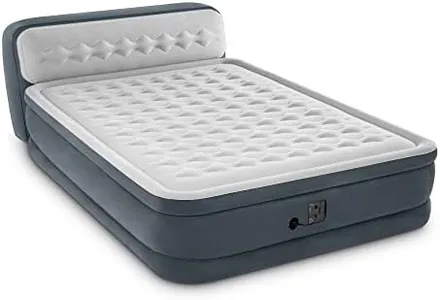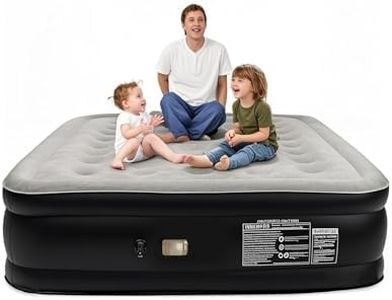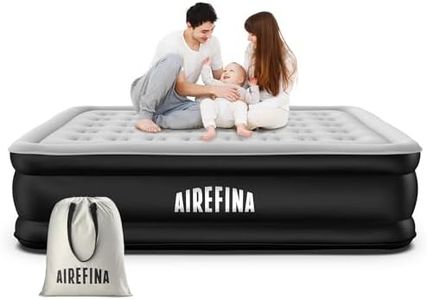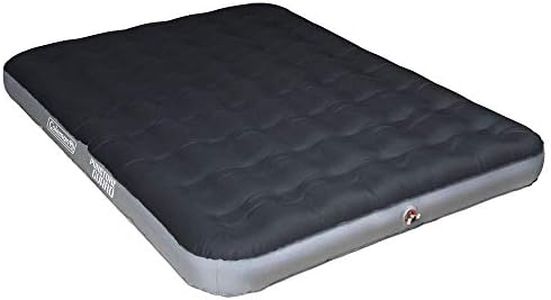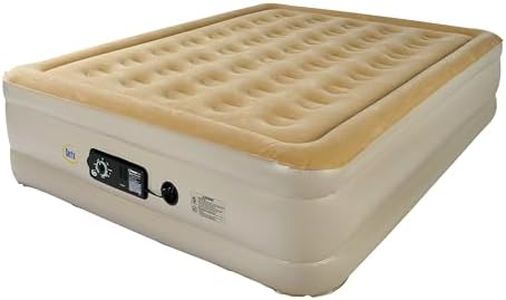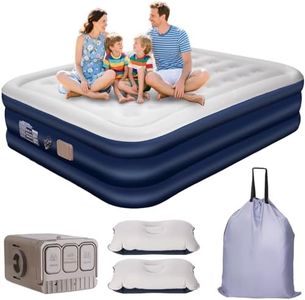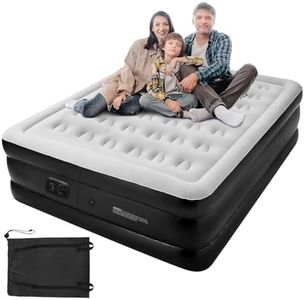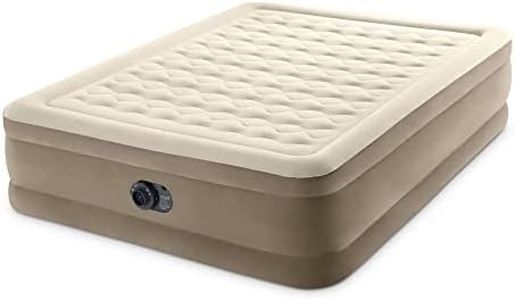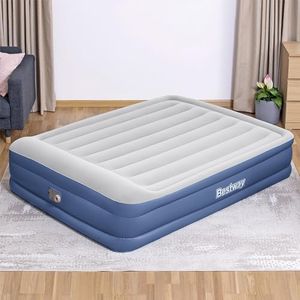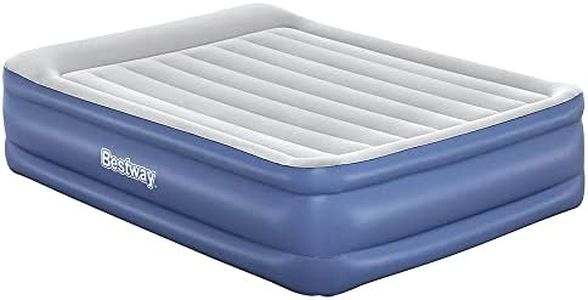We Use CookiesWe use cookies to enhance the security, performance,
functionality and for analytical and promotional activities. By continuing to browse this site you
are agreeing to our privacy policy
10 Best Queen Size Air Mattress
From leading brands and best sellers available on the web.Buying Guide for the Best Queen Size Air Mattress
Choosing the right queen-size air mattress can have a big impact on your comfort, whether you're preparing for guests, going camping, or needing a temporary bed at home. Start by thinking about where and how often you'll use the mattress. Portable air beds can offer convenience and save space, but they differ a lot in terms of comfort, durability, and ease of use. Focusing on the key features will help you narrow down your options and select an air mattress that matches your specific needs.Inflation MechanismThe inflation mechanism is how the mattress fills with air. Some air mattresses have built-in electric pumps that allow easy, hands-free inflation and deflation, while others need a manual or external pump. Built-in pumps are more convenient, especially for indoor use or if you need to set up or pack away the mattress often. Manual pumps might be better for outdoor use where electricity isn’t available. If you want hassle-free setup at home, go for a built-in pump. For camping or outdoor adventures, choose a mattress compatible with a manual or battery-powered pump.
HeightThe height of an air mattress, often called 'profile,' can vary from low (about 6-10 inches) to double high (15-22 inches). Higher mattresses are easier to get in and out of—helpful for older adults or anyone with limited mobility—and feel closer to a regular bed. Low-profile air mattresses are lighter and more compact, making them better for travel or camping. Consider your storage space, who will use the mattress, and how much comfort you want before picking the height.
Material DurabilityMaterial durability means how tough and long-lasting the air mattress is. Most mattresses are made of PVC or similar plastics, with some having flocked or fabric tops for improved comfort and to help sheets stay in place. Thicker materials and reinforced seams make a mattress more resistant to punctures and leaks, which is important if children or pets will use it or if you plan frequent use. If durability is key for you, look for thicker materials and layered construction.
Weight CapacityWeight capacity is the maximum amount of weight an air mattress can support without losing air or becoming damaged. Queen-size mattresses generally support between 400 and 650 pounds. It’s important to think about who will sleep on it; for couples or heavier individuals, opting for a higher weight capacity helps ensure stability and prevents deflation overnight.
Comfort FeaturesComfort features in air mattresses include internal support systems (like air coils or beams), flocked surfaces, and adjustable firmness. These features prevent sagging and help the mattress feel more like a traditional bed. If you plan to use the air bed regularly or for multiple nights, look for features like horizontal or vertical air chambers, soft top fabric, and the ability to fine-tune firmness by adding or releasing air. Occasional users might not need as many comfort extras.
Portability and StoragePortability and storage matter if you plan to move the air mattress often or have limited space. Some air mattresses are very light and come with carrying bags, making them perfect for travel or camping. Others, especially taller or built-in pump models, can be heavier and bulkier. Think about how easy it should be to pack up the mattress and where you’ll keep it when not in use.


